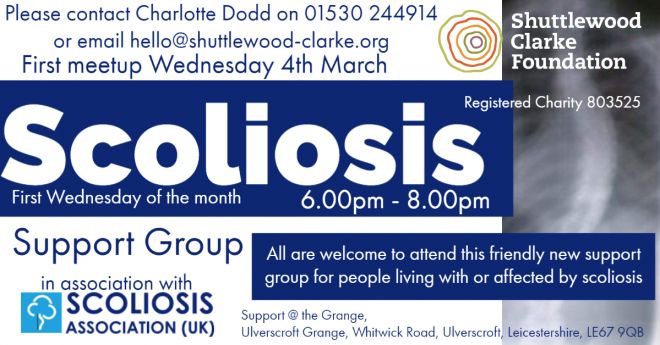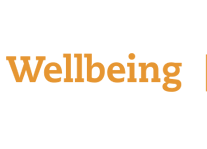Scoliosis Support Group Launch
Our new support group will be launching on Wednesday 4th March - meeting on every first Wednesday of the Month at Ulverscroft Grange, Whitwick Road, Ulverscroft, Leicestershire, LE67 9QB. All are welcome including those living with a diagnosis of scoliosis and their family friends and supporters! For more information please contact Charlotte Dodd on 01530 244914.
Scoliosis
(Information supplied by scoliosis association UK)
Scoliosis is when the spine curves to the side. The spine can also twist at the same time. This twisting can pull the ribcage out of position. It is important that a person with scoliosis sees a scoliosis specialist.
Scoliosis is not a disease. It just means that in an often otherwise healthy person the spine is curved or twisted. It is not infectious or contagious. It does not develop because of anything a person did or did not do.
Although many people have not heard of scoliosis it is not rare. 3 to 4 children per 1000 need specialist supervision.
Scoliosis can affect people at different points in their lives. It can happen:
- Before birth (congenital)
- In young children (early onset),
- In older children and teenagers (adolescent idiopathic)
- As adults (degenerative or de novo).
In most cases the cause is unknown (idiopathic). Sometimes the scoliosis is because of a neuromuscular condition, such as muscular dystrophy or cerebral palsy. Scoliosis can also develop as part of a syndrome, such as Marfan syndrome.
Scoliosis can affect a person’s appearance because when the spine bends to the side, the small bones that make up the spine (called vertebrae) can become twisted. The twisted vertebrae can pull the ribs round with them, which sometimes causes a lump to form on the person’s back or for their back to appear rounded. Other possible signs of scoliosis are a shoulder blade that sticks out or an uneven waist.
The spine can curve to the left or the right. The curve can happen in different parts of the spine. It might be in the chest area, which is called ‘thoracic’ scoliosis. It might be in the lower, ‘lumbar’ area of the spine. A large thoracic curve can affect how well the lungs work.
Sometimes there are two curves and the spine may look like an S shape from behind. This is called a ‘double curvature’. When the curve is S-shaped a person’s spine can appear quite straight because the two curves cancel each other out.
Most cases of scoliosis should be checked regularly by a scoliosis specialist. The SAUK team can let you know where to find your nearest specialist centre.
Spotting and treating a curve early may allow a patient to try non-operative treatment like bracing. If curves are discovered late, when they are already severe, treatment can be more difficult and sometimes work less well. It is important that if you, or your child, are found to have scoliosis you ask your GP for a referral to a scoliosis specialist as soon as possible. A specialist will be able to assess the curve. They will tell you how big it is and discuss the best treatment options. - (Information supplied by scoliosis association UK)









